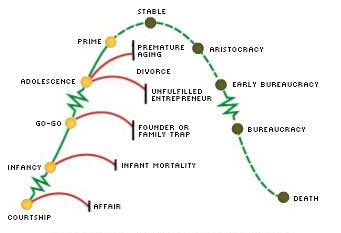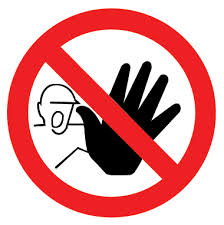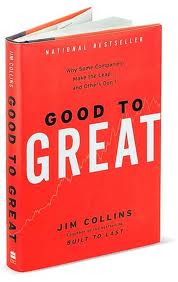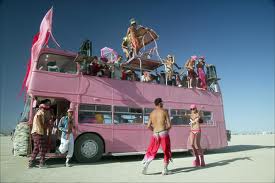Ready for 2015? Get the Right People on the Bus
 The objective of this series of posts is to outline a 2015 “preparation process” where we end up having a plan and a budget that is a stepping stone to maintain our position as the global market leader or to reach this position as soon as possible.
The objective of this series of posts is to outline a 2015 “preparation process” where we end up having a plan and a budget that is a stepping stone to maintain our position as the global market leader or to reach this position as soon as possible.
To accomplish this we must have all the stakeholders 100% aligned, committed and capable of executing the plan and delivering the numbers.
However, performing better than the market and all of our competitors first and foremost requires an excellent team.
The people on the bus
Did you ever get the opportunity to read “From Good to Great” by Jim Collins?
Jim Collins published his “Good to Great” bestseller in 2001. The book was the result of five years of research figuring out why some companies were able to outperform their competitors. Jim Collins spent the five years researching why some companies suddenly broke out from their peer group and continued to perform three times better than their peers for 15 consecutive years (the definition of “great”).
He extracted six principles, or “modes of operation,” which all great-performing companies seem to share and that good-performing companies lack.
This post will focus on the first principle:
First who… Then what! We expected that good-to-great leaders would be setting a new vision and strategy. We found instead that they first got the right people on the bus, the wrong people off the bus, and the right people in the right seats – and then figured out where to drive it. The old adage “People are your most important asset” turns out to be wrong. People are not your most important asset. The right people are.” (Page 13).
Jim Collins writes about “large” organizations. He is studying established and listed companies. Jim Collins is referring to the “top executive bus.”
What about smaller organizations with <1,000 people? Does the “people on the bus” principle also apply to smaller companies? Yes, my experience says that this principle is universal. In most companies and institutions you can replace >90% of the people with no negative impact on the performance. In fact you can dismiss quite a few and experience an immediate improvement in performance.
Getting the wrong people “off the bus” can release tremendous amounts of energy. Getting the right people “on the bus” and in the right seats makes a dramatic positive difference.
The small versus the large organization.
 The larger the organization, the smaller the percentage of people who make a real long-term difference. Policies, procedures, infrastructure and inertia take over. It is easier to find replacements for routine jobs and there is a large pool to source from. I am not saying that people don’t matter in large organizations. I am just saying that we cannot expect to have 100,000 “exceptional” people in a 100,000 people organization.
The larger the organization, the smaller the percentage of people who make a real long-term difference. Policies, procedures, infrastructure and inertia take over. It is easier to find replacements for routine jobs and there is a large pool to source from. I am not saying that people don’t matter in large organizations. I am just saying that we cannot expect to have 100,000 “exceptional” people in a 100,000 people organization.
Large organizations need exceptional leaders to organize and motivate ordinary people to deliver exceptional results.
The smaller the organization, the bigger the percentage of people that must make a big difference:
- The degree of specialization is smaller, so we need people who can cover multiple disciplines.
- Our installed customer base is still small, so we need people who can sell to new accounts and compensate for our lack of image and reputation.
- We need to get a firm grip on our sales process, adapt to the needs of our customers (or market) and defeat our competitors.
- The internal procedures are still being defined; we need people who can think and act on their feet.
Lack of market share, procedures, infrastructure and inertia requires leadership, initiative, social skills, courage and out-of-the box thinking and behavior. It is difficult to find replacements for such people and there is only a small pool to source from.
“Der Fisch stinkt vom Kopf”
Executive management in small organizations is usually the founders/owners. If the current executive management shouldn’t be on the bus, then we certainly have a challenge.
 According to Jim Collins’ findings, great companies all have level five leaders and leadership cultures:
According to Jim Collins’ findings, great companies all have level five leaders and leadership cultures:
Great top leaders are passionate and strong willed, but they do not have big egos, nor are they tyrannical.
- They listen well and have an integrating leadership style.
- They are focused on the success of the company and the team and not on their own success.
- They understand how to attract the right people and move/get rid of the wrong people.
- The want and can face brutal facts.
- They are looking for a market/segment/concept where the company can become a clear #1.
If I am a top executive by default because I am the owner of the company, then I must look at myself in the mirror and ask “do I have these qualities?” If not, I may serve my own interests better by stepping aside. Leave the bridge to one who has these attributes.
This is one of the most difficult undertakings in the life of any company. Adizes calls this issue the Founder or Family Trap. If we are involved with startups and companies in the Infancy, Go-Go and Adolescence stages we see this issue all the time. It is hard to replace the passion of the founder, yet he/she is often the bottleneck for growth.
This issue is two sided:
- We need the founder to step aside, take another seat on the bus or leave the bus.
- We must find a CEO who can work with the founder if he remains on the bus.
Being a CEO in a company where the founder is still on the bus requires that the CEO becomes co-owner. It is highly unlikely that the day-to-day team-work can survive a CEO as a mere salary-man.
Finding a CEO who can replace a founder is a real challenge.
Manning the bus
With the right CEO in place the rest of the bus can be organized. How do we apply the “First who… Then what” principle in a small or medium sized company?
Specialists: We need someone with outstanding technical skills and someone with outstanding domain knowledge. In addition they need to develop leadership capabilities. Growing from our current local position to global leadership requires an outstanding product offering for a well-defined market segment.
Flexibility: We must look for people who have the skills required, but who are not afraid of covering all the other bases, when needed.
Energy level and adaptability: We must look for people with drive and passion. Maybe they will drive too fast at times, but we can manage that. Maybe they will yell at each other, but we can moderate that. Having a bunch of people being nice and polite to each other doesn’t get us moving. They must respect each other, but they should be prepared to take a friendly fight now and then.
Social skills: Team work can create massive results. The challenge is to find those who apply the social energy on company issues rather than on everything else. These days team work can be virtual!! People don’t need to be in the same room all the time to release social energy.
Growth opportunity: We must look for someone to whom this challenge represents an opportunity for personal growth. We cannot afford green rookies on all positions, but I would often choose ambition over experience.
Avoid
 Avoid people from big companies who are used to all types of support functions and perks. We may be impressed with someone who has worked for a large recognized company. Don’t ever make that mistake. We cannot transfer the brand value of a great company to an individual who worked there. We should in general always disregard who they worked for. Look at who they are, what they have done and the results they have achieved – not who they worked for!
Avoid people from big companies who are used to all types of support functions and perks. We may be impressed with someone who has worked for a large recognized company. Don’t ever make that mistake. We cannot transfer the brand value of a great company to an individual who worked there. We should in general always disregard who they worked for. Look at who they are, what they have done and the results they have achieved – not who they worked for!
Avoid political creatures. They are difficult to spot. People who have survived in middle management of large organizations are often (but not always) political creatures. You find them everywhere. They suck the energy out of you and the organization. Political behavior can be a true asset in dealing with external stakeholders (customers, vendors etc.), but never internally.
Other Posts in this Series
Ready for 2015? Get Aligned First
Ready for 2015? Why You Should Perform a Business Model Check
Ready For 2015? The Revenue Budget Challenge
Ready for 2015? Why You Shouldn’t Bet the Farm










